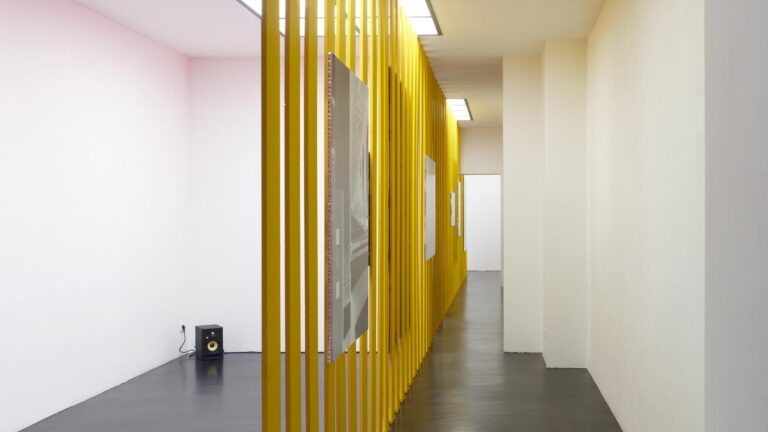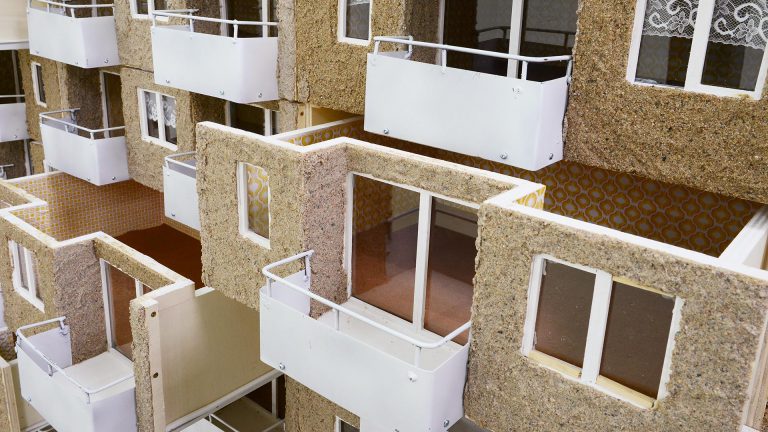Artists: Olu Oguibe, Hans Haacke, Hiwa K, Marta Minujín, Pope.L, Vadim Sidur, Daniel Knorr
Exhibition title: documenta 14: Learning from Athens
Artistic Director: Adam Szymczyk
Curated by: Adam Szymczyk, Bonaventure Soh Bejeng Ndikung, Pierre Bal-Blanc, Hendrik Folkerts, Candice Hopkins, Hila Peleg, Dieter Roelstraete, Monika Szewczyk
Venue: documenta 14, Königsplatz, Friedrichsplatz, Zwehrenturm, Kassel, Germany
Date: June 10 – September 17, 2017
Photography: all images copyright and courtesy of the artists and documenta 14, all photos by Art Viewer
documenta 14: Königsplatz
While Olu Oguibe’s project in Athens, The Biafra Time Capsule (2017), deals with an archive of the human tragedy of the Biafra War (1967–70), his work in Kassel refers to a critical humanitarianism toward victims of war in general. Reaffirming the timeless, universal principles of care for all under persecution and for all that have had to seek refuge, his project takes the monumental form of an obelisk placed on Königsplatz with an inscribed text in four languages. Das Fremdlinge und Flüchtlinge Monument (2017) takes its cue from Oguibe’s experiences as a child who survived the Biafra War, which claimed the lives of some two million civilians in just thirty months.
Königsplatz—constructed in 1767 and named after Landgrave Friedrich von Hessen-Kassel (1676–1751), also the King of Sweden—is often a site of assembly, festivities, and political demonstrations; for example, the protest in 2015 about the living conditions of refugees. It is also where Goethe was famously refused a hotel room when he arrived there one night because he first spoke French to the innkeeper. Oguibe’s obelisk on this site is a repudiation of the anti-immigrant bigotry that certain world leaders and their followers have been fanning around the world lately, and an acknowledgment of the life-saving hospitality and refuge which others have offered to counter this bigotry. The work evokes and materializes the current crisis of humanity, and is a call for action.
Olu Oguibe, Das Fremdlinge und Flüchtlinge Monument (Monument for strangers and refuguees), 2017
Olu Oguibe, Das Fremdlinge und Flüchtlinge Monument (Monument for strangers and refuguees), 2017
Olu Oguibe, Das Fremdlinge und Flüchtlinge Monument (Monument for strangers and refuguees), 2017
Olu Oguibe, Das Fremdlinge und Flüchtlinge Monument (Monument for strangers and refuguees), 2017
Olu Oguibe, Das Fremdlinge und Flüchtlinge Monument (Monument for strangers and refuguees), 2017
documenta 14: Friedrichsplatz
Constructed in the late eighteenth century as a way to expand Kassel from the old medieval town toward the flourishing Huguenot settlement nearby, Friedrichsplatz has often been employed as an arena for the display of political and military power. The statue of Landgrave Friedrich II overlooks his prized museum. The Third Reich used the massive square for military parades, draping all the surrounding buildings in the red and black of the swastika flag. After World War II, Friedrichsplatz became a centerpiece of urban regeneration. It was cut in half by Frankfurter Strasse to accommodate the influx of cars—and the attendant dream of modernity—and the square’s main cultural site, the Fridericianum, hosted the first documenta in 1955, another powerful symbol of cultural restitution. Since then, Friedrichsplatz has developed into a heterochronous marketplace. The square itself sits empty most of the time, while the city’s cultural institutions on the north side, as well as the disappearing shops that fostered the local economy in recent decades on the south, observe the steadfast progression on the Obere Königsstrasse of the chain stores that shape the global marketplace today.
Marta Minujín’s The Parthenon of Books (1983/2017) stands tall on Friedrichsplatz, effectuating both the history and the displacement of documenta 14. Its columns, made up of banned books, echo the neoclassicism of the columns that support the Fridericianum and art histories within. While Walter De Maria’s quietly grand permanent installation on the square invites us to travel a kilometer underground, Monument to Victims of Violence (1974) by Vadim Sidur (1924–1986)—temporarily relocated from the other end of the square—enters into a conversation with the monument to one of Kassel’s rulers. Hiwa K’s When We Were Exhaling Images (2017) reminds us of a longer journey on the surface, one that thousands of people still make every day seeking refuge. Other new works itinerate out from the Fridericianum: Daniel Knorr’s vaporous Expiration Movement issues from the tower of the building (Zwehrenturm), and Banu Cennetoğlu’s BEINGSAFEISSCARY, replacing the signage bearing the museum’s name, marks the site’s history and comments on contemporary Kassel and Fortress Europe at large.
Marta Minujín, The Parthenon of Books, 2017, Steel, books, plastic sheeting
Marta Minujín, The Parthenon of Books, 2017, Steel, books, plastic sheeting
Marta Minujín, The Parthenon of Books, 2017, Steel, books, plastic sheeting
Marta Minujín, The Parthenon of Books, 2017, Steel, books, plastic sheeting
Marta Minujín, The Parthenon of Books, 2017, Steel, books, plastic sheeting
Marta Minujín, The Parthenon of Books, 2017, Steel, books, plastic sheeting
Marta Minujín, The Parthenon of Books, 2017, Steel, books, plastic sheeting
Marta Minujín, The Parthenon of Books, 2017, Steel, books, plastic sheeting
Marta Minujín, The Parthenon of Books, 2017, Steel, books, plastic sheeting
Marta Minujín, The Parthenon of Books, 2017, Steel, books, plastic sheeting
Marta Minujín, The Parthenon of Books, 2017, Steel, books, plastic sheeting
Marta Minujín, The Parthenon of Books, 2017, Steel, books, plastic sheeting
Marta Minujín, The Parthenon of Books, 2017, Steel, books, plastic sheeting
documenta 14: Zwehrenturm
It all depends on the windʼs direction and force. When the wind blows upwards, the Zwehrenturm transforms into a chimney and reminds me of a factory—the art market as industry. But the billows of smoke also form a connection to the clouds in the sky, like an alliance. When the wind blows downwards, the Fridericianumʼs tower looks like a house in flames, covered in wads of smoke—we hear muffled sounds of fire engine sirens far afield. Later, after the smoke sank, it settles near the ground, and haze spreads. The smoke whispers the building’s past to the audience, it tells about these dark moments in history, not so long ago, of banned books burning at its doors, and a library eliminated.
Daniel Knorr, Expiration Movement, 2017, Smoke and manifesto
Daniel Knorr, Expiration Movement, 2017, Smoke and manifesto


























